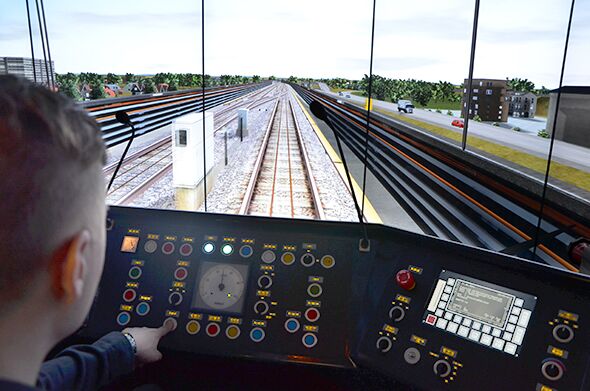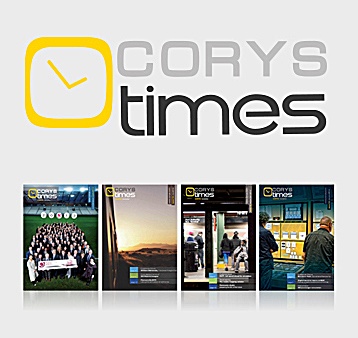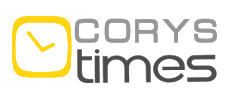Flat screens are becoming increasingly large, and cheaper, too; as a result, they are tending to replace the projection systems used in transport simulators. However, projectors still offer some major benefits. The following five considerations can help you make the decision that’s best for you.
Field of view: projectors score better
The human eye has a field of view of around 160°. The closer a display system is to this value, the more it will help create immersion for trainees.
The largest flat screens available on the market have a diagonal width of 80 inches at the most. Unless they are placed right in front of the trainee’s nose, the image will extend to only part of their field of view, whereas it is easy to project images onto a screen measuring 100” or even 150”, or onto a slightly curved screen.
Visual comfort: projectors score better
Drivers watching a scene displaying rails, signals and landscapes are looking “into the distance”. The eye does not need to adjust, providing optimum comfort
It will be the same if the the image is projected at a distance of two metres or more.
This can be achieved with a 100” or 120” projection screen. Flat screens, on the other hand, are smaller and therefore have to be placed closer, at distances of no more than 1m20 or even 1m in some cases. This means the eye has to adjust, having to cope with near vision whilst interpreting a scene that is supposed to be distant.
As a result, projectors are much more comfortable to use.
Definition: it’s a draw
Both flat screens and projectors can now deliver full HD – 2 million pixels. Manufacturers are already offering 4K generation equipment (with four times as many pixels – 8 million) and are even preparing new generations featuring 8K (32 million pixels) for the 2018 soccer world cup, in a bid to get fans to invest in new equipment. Both technologies deliver similar results.
The only way to improve definition still further is to provide a wall of screens with ultra-thin edges, or a large-format projection screen powered by a multi-channel system; but that gets expensive really fast.
Even so, some transport operators that set a premium on display quality do invest in this type of system. In 2006, CORYS delivered a projection system providing 220° with an overall diameter of 5m, featuring back projection of images from 5 projectors!
The simulators in question were renovated in 2015, and the visual system was replaced by a set of nine 75” flat screens, resulting in more than 18 million pixels.
Upkeep and maintenance: flat screens score better.
Flat screens have no lamps, lenses, fans, or focusing to cope with. There’s nothing to replace or adjust! Screens offer tried and tested reliability and if one does fail, it’s a simple task to unplug and swap it. There’s no question that this aspect is easier with flat screens.
Budget: flat screens score better.
Driven by consumer markets, flat screen prices are constantly falling from one year to the next. 50” flat screens costing €10,000 or more a few years ago cost less than €1,000 in 2015.
Projectors are following the same trend, but more slowly. In addition, they require a certain distance, so a study is systematically needed to find the best possible location, with the addition of a reflecting mirror sometimes required.
Except for really large models, flat screens are the most competitive in the majority of cases – which is why 80% of operators choose them when they acquire or renovate a simulator.
Why projectors have not yet had their final say
• Images are the most important training medium. Images show the colour of signals, the content of messages, the density of passengers on a platform, and so on. This makes them a key element in immersion and thus in educational effectiveness – and projectors are still unbeatable in terms of field of vision and visual comfort.
• Manufacturers have recently introduced projectors with an ultra-short throw, capable of displaying Full HD images on a screen just 40cm away. Distance, location, and mirror issues have been done away with as a result. What is more, the new machines are being offered at extremely attractive prices. In short, the contest with flat screens is far from over.
Gérard Paulhac, CORYS Transport Simulation Expert
https://www.corys.com/en/transportation-portail
https://www.corys.com/en/simulator-range






